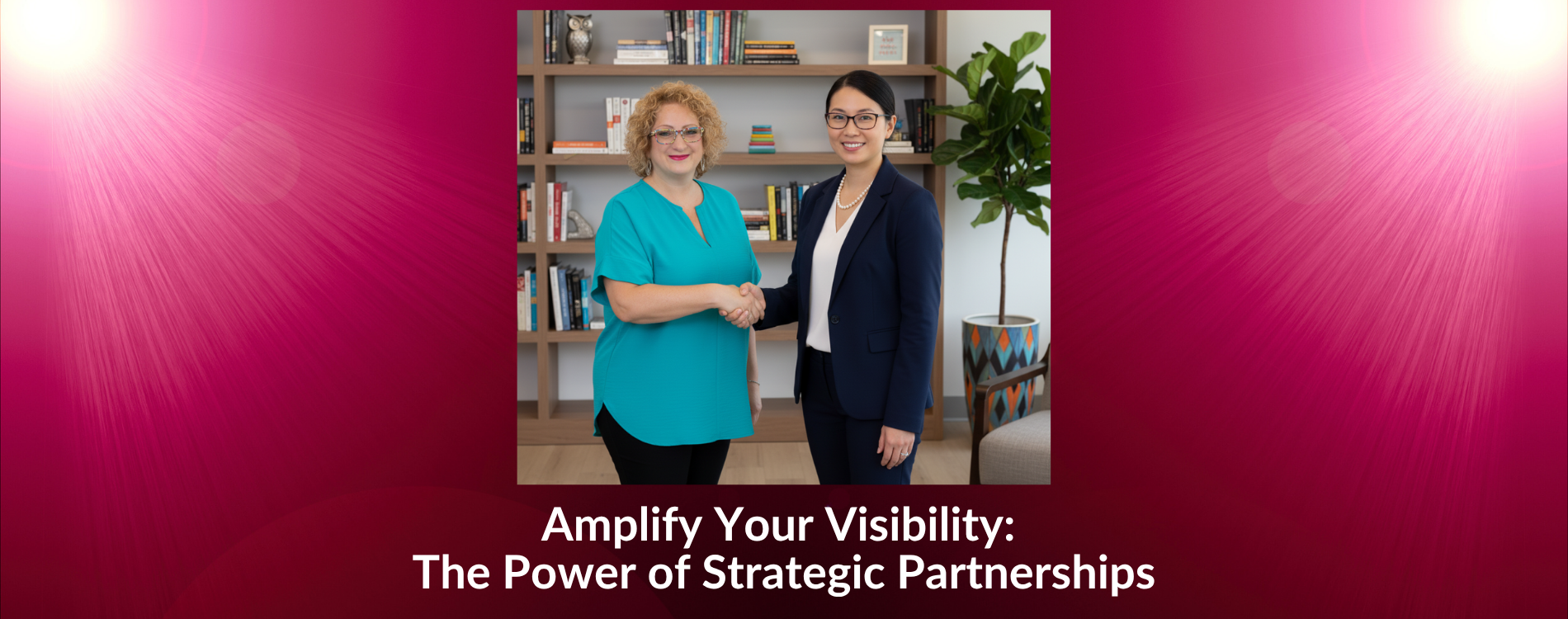Avoid Getting Sued: Website Accessibility Laws Translated

If you're a coach, consultant, speaker, or online entrepreneur, your website isn't just your business card—it's your digital handshake. It's how you show up, connect with your audience, and build trust online.
But what if your website is unintentionally excluding people?
On June 28, 2025, the European Accessibility Act (EAA) officially goes into effect. This new law will have major implications for digital businesses, especially those offering services to clients in the European Union (even virtually). (And if you don't offer services to clients in the European Union, keep reading because there are still legal impacts for businesses in the United States!)
And yes, that includes you if you sell programs, courses, or coaching services online.
Let’s break down what the EAA is, who it applies to, what compliance looks like (especially for those in the United States), and why this moment is about more than just regulations - it’s about building an inclusive, professional, and trustworthy brand.
What Is the European Accessibility Act?
The European Accessibility Act is an EU-wide directive requiring certain goods and services - including websites, apps, and digital platforms - to be accessible to people with disabilities.
Its goal is to remove digital barriers for the over 135 million Europeans living with a disability. And while that number is massive, the impact is even bigger: the EAA is pushing for a more inclusive digital world across industries and borders.
Who Needs to Comply?
If you’re a business, organization, or entrepreneur who serves or markets to people in the EU (even if you're based elsewhere), this applies to you.
You’re expected to comply if you:
- Sell courses, downloads, or memberships online
- Offer virtual coaching or consulting
- Host live or recorded webinars
- Run a speaking business with global reach
- Have an e-commerce component
- Serve clients internationally - even digitally
In short: If your site is available to EU users and your services are accessible to them, the EAA matters to you.
But I only Market to People the United States...
In the United States, Title III of the Americans with Disabilities Act (ADA) requires that businesses and nonprofits open to the public provide full and equal access to people with disabilities. While the original 1990 law doesn’t explicitly mention websites, the Department of Justice has clearly stated that it applies to websites of public accommodations. That includes features like online booking, digital forms, and service pages—anything that helps a customer engage with your business. The ADA requires that these digital interactions be usable by people who rely on screen readers, keyboard navigation, or other assistive technologies. Although there is still some legal gray area for smaller businesses without physical locations, the DOJ’s position is firm: all websites must be accessible. As a result, lawsuits are increasingly targeting digital platforms, with settlements ranging from $5,000 to $20,000 or more, a costly consequence for small businesses that aren’t paying attention.
In 2024, over 4,000 digital accessibility lawsuits were filed across state and federal courts. What’s shifting now is where these lawsuits are being filed. While federal cases remain significant, state-level filings are on the rise, particularly in New York and California. In New York alone, lawsuits can be filed against any website that a resident can access, regardless of where the business is based. The growing use of state-level laws like the California's Unruh Civil Rights Act and New York’s Human Rights Law signals a more aggressive and targeted approach to digital compliance enforcement. And troublingly, nearly half of federal lawsuits in 2024 were filed against businesses that had already been sued, showing that surface-level fixes and delayed action leave businesses vulnerable to repeated litigation.
What Counts as an “Accessible” Website?
Accessibility isn’t just about ticking a box. It’s about making your digital experience usable for everyone, including:
- People with visual impairments who use screen readers
- Users who navigate with a keyboard, not a mouse
- Those with colorblindness, hearing impairments, or cognitive disabilities
To be compliant, your website needs to follow basic accessibility standards like:
- Readable fonts and strong color contrast
- Keyboard-friendly navigation
- Proper heading structure (H1, H2, etc.)
- Alt text for all images
- Accessible forms and buttons
- Clear, consistent layout and design
These align with the Web Content Accessibility Guidelines (WCAG)—the same global standards used in ADA compliance here in the U.S.
Why Overlay Tools Can Create Even Bigger Risks
A key issue in many of the US-based lawsuits is the use of accessibility overlays or widgets - tools marketed as instant ADA compliance solutions. In reality, these overlays often introduce new problems: they interfere with screen readers, block keyboard navigation, and fail to correct core WCAG violations in the website’s code. In 2024, over 1,000 lawsuits specifically named overlays as part of the accessibility problem, not the solution. And in a landmark move, the Federal Trade Commission fined overlay provider accessiBe $1 million for deceptive practices, including false advertising and fake reviews. True accessibility requires more than a plugin. It takes manual WCAG audits, expert remediation, and an ongoing commitment to inclusive digital design. Quick fixes might feel convenient, but they put your brand, and your business, at legal and reputational risk.
What Happens If I Ignore This?
If you're not compliant and you operate (or sell) in the EU, you could face:
- Fines or penalties
- Required changes under tight deadlines
- Legal challenges
- Loss of trust or reputation
But even if you’re outside the EU, the bigger risk is lost opportunity. People can’t hire you, book you, or learn from you if your site isn’t usable for them.
And let’s be honest—a website that doesn’t reflect your values or serve your full audience isn’t doing its job.
What Should You Do Now?
If you’re not sure whether your website meets accessibility standards, you’re not alone. Most entrepreneurs and even many developers don’t realize what’s required until they’re already behind.
Here’s where to start:
- Audit your website for accessibility.
- Fix any red flags before June 28.
- Get support if you need it.
Accessibility Is More Than Compliance - It’s a Strategic Brand Move
As a Brand Strategist and Website Developer, I help Thought Leaders clarify their message and build websites that don’t just look great - they work hard for your brand.
When we make your website accessible, we’re doing more than following regulations, we are:
- Building trust with a broader, more diverse audience
- Increasing visibility with search engines
- Strengthening your credibility as a professional and a leader
I guide my clients through accessibility-informed strategy and design that reflects their authority and values - because your website should serve everyone it reaches, without exceptions. Let’s make sure your brilliance isn’t blocked by barriers.
Ready to Find Out Where You Stand?
I’m offering a limited number of Complimentary Website Accessibility Reviews to help you assess where your site stands and what changes (if any) you need to make.
✨ Click here to request your free 15-minute Website Accessibility Review
Let’s make sure your website is doing what it’s supposed to do - build your authority, attract aligned clients, serve your audience with clarity and integrity, and protect your business by staying aligned with today’s accessibility laws and standards.





